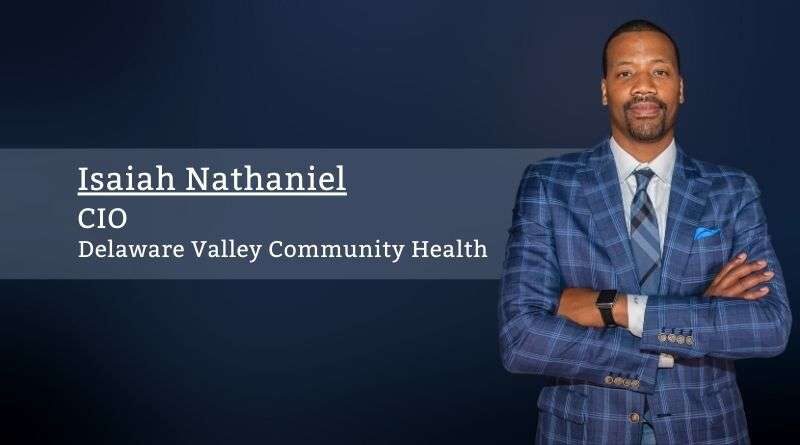How accessible are you?
By Isaiah Nathaniel, CIO, Delaware Valley Community Health
We all know our healthcare system is fragmented. This isn’t something new or revolutionary. It is almost explicitly accepted as a course of business in healthcare. We collectively address it with a few articles, proposed legislation, and new technologies, but what does it actually do if they are not operational. A report released by JAMA in October of 2019 estimates that healthcare waste is between 760 billion and 935 Billion. What I find very interesting is that when you look at five items that play a part in the fragmentation and waste; Integrated Delivery System, Payments Models, Care Coordination, Interoperability, Adoption of Innovation, these are the exact same five items that are supposed to stitch the system together.
By nature, Community Health Centers have on average 3/4’s of the patient data to complete the full picture of the patient’s health in our systems not only to our EHR’s but also to our subsequent Population Health Systems.
For instance, “Integrated Delivery Systems is a term that stands for a health system with a goal of logical integration of health care delivery as opposed to a fragmented system or a disorganized lack of system.” It is intended to be a collaborative model and I believe many of us have made significant improvements in this aspect, but we stop at the internal organization and not extend it past the walls to the broader healthcare eco-system. JAMA’s same research also estimates that small interventions savings that address waste were $191 billion to $286 billion.
At the 30,000 foot view, I categorize/classify this large issue of waste to ACCESS.
I am not talking about traditional access where you may think about the physical doors being open to your buildings or your provider staffing ratios related to bed count and patient volume. I am referring to the patient’s data and it is truly accessible to your organization at any point during the visit and to the larger healthcare system.
A very quick on the ground example for context. As a patient walks in the door, they are greeted by registration, billing, triage, provider, lab, pharmacy (if necessary), and then referrals (if also required.) In some institutions, this one patient is interfacing with potentially 3 to 4 separate systems. If these systems don’t talk to each other, then we begin the running waste meter and create unnecessary efforts towards when tallied a poor example of what should be a streamlined accessible patient/staff experience.
Taking the same scenario now, you include the next stop on the patients’ journey to the specialist. They are greeted with the same six steps they went through because of its two different entities. Are you watching the meter run up again? Why can’t these systems at some level talk to each other to make it easier and more accessible to the patient? We can Cash App and Venmo family, friends, or others with simple app integrations, so why does healthcare make it so difficult? If all of our ultimate goals are for healthier people, why do we create access barriers for that to occur?
I foresee some (probably 49%) of my colleagues and those reading this to say because we want to protect patient data and our systems from security threats and cyber-attacks. While I agree with that sentiment on the surface, my comeback to that always is why we have HL7’s and FHIR technology? These protocols are made for secure exchange specific to healthcare data, so why don’t we believe it to be what we created them to be? I realize the challenges related to consent, security, and interoperability, but to my point at the onset of this, is that we have technologies that ready to go, but we don’t use them for what the intent was.
How do we achieve this level of data access? It seems complex and daunting; however, I challenge us to know what truly is the “Healthcare Triangle.” I am the CIO of an 8-site community health center system and we consider ourselves a part of the triangle with our hospital partners. By nature, Community Health Centers have on average 3/4’s of the patient data to complete the full picture of the patient’s health in our systems not only to our EHR’s but also to our subsequent Population Health Systems. As of 2019, Health Centers serve approximately 29 million patients. 13 million are underserved; 8.7 million are children; 1.4 million are homeless, and over 385,000 are veterans. 63% of the 29 million patients are apart of the racial and ethnic minority groups that make up a good portion of patients in the exam rooms that don’t need to be. As Community Health Centers, we know our populations intimately. These are those, as I stated before, that are most at risk and they trust us. We have all that data because we don’t just see one patient; we typically see the whole family. We ask them the questions they are sensitive to, like housing status, financial status, and food insecurities. They give us this accurate information because again, they trust us. They trust the access we have provided for this data exchange.
The Institute for Healthcare Improvement has identified and coined the term “Triple AIM,” which includes “Reducing Costs,” “Patient Experience,” and “Population Health.”
At its core, the focus of the Triple Aim is on patients and improving their lives. Patients at the center of care a direct outcome by removing such barriers to care. Any modifications to the original Triple Aim should not take us away from our highest priority. The latest addition to the AIM objectives is the “Provider Well Being.” How does this align with the topic at hand? Attempting to meet the quadruple aim from both a business and technology perspective will position your organizations to be data “accessible” and ultimately do our part in reducing the waste on the system we love so much. That’s why we work our careers on it. Don’t believe me, give it a year and then check your Press Ganey patient experience scores.



